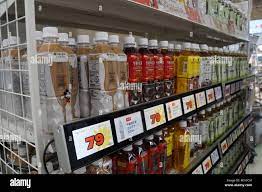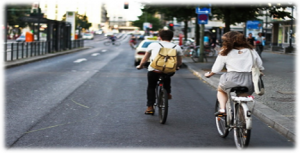It wasn’t too long ago that Tokyo was considered the most expensive city in the world. Not to mention that Japan as a whole was very expensive as well. Even today, that (mis)conception is still quite prevalent.
The truth is that Japan is probably nowhere as expensive as you may think (or fear). Even living in Tokyo can be manageable, assuming that you get a reasonably priced place to rent. This article hopes to introduce to you some ways of coping and forcing down your costs.
This is more meant for people living in Japan than touring it (though there’s nothing stopping tourists from using the tips here). Also, the stuff here has been formulated mostly by me and other students in Japan – and as you may or may not know students love to save in ridiculous ways to spend money on ridiculous things! Some of the tips here may seem extremely trivial but hey, a yen saved is a yen spendable on something else.
• Food
o 1. Cook.
o 2. Shop Smart – At The Wholesale Market
o 3. Shop smart – And Late If You Don’t Plan To Cook
o 4. Miscellaneous Tips From Me And My Friends
• General Shopping
o 1. 100 Yen Shops
o 2. Point cards…
o 3. Consider Shopping Online
o 4. Also consider buying things second-hand.
o 5. For weird souvenirs:
• Transport
o 1. Cycle
o 2. Kaisuuken
o 3. Special Tickets (eg. Seishun 18)
o 4. Buses are good too.
o 5. Budget airlines for very long distances.
• Lodging / Rent
o 1.Rent
o 2.Temporary lodging
• Utilities
• Entertainment
o 1. Karaoke Deals
o 2. Amusement Centers
• Bonus! Free Travel!
FOOD
You need food to survive so you’ll definitely need to spend some money on this. But there are ways of suppressing the cost.
1. COOK.


This may be obvious at first, but keep with me here, it gets more specific. Assuming that you know where to shop for your ingredients cooking may be able to slash your expenditure on food to one third of what it might be without. One friend (American, Male) spends less than 10,000 yen a month by cooking three times every day. Is three times a day too much? Cook two portions for dinner and leave half for the microwave for lunch tomorrow. Saves you both the money and the expense.
Even if you don’t want to cook whole meals, even just cooking the rice and bringing it with you for lunch (mainly applicable for students) will save you money in the long run.
2. SHOP SMART – AT THE WHOLESALE MARKET
Wholesale markets (ie. 業務用(ぎょうむよう)スーパー) are places where restaurant owners go to buy their ingredients. These places are your friends especially if you cook a lot. There are a few good places worth keeping in mind.
1. Costco: Readers from North America and the UK may recognize this. Yes it’s in Japan too. You need to pay 4000 yen for the membership but if you’re sharing a house with people, you can split it up. Anyways, if you’re living nearby it’s definitely worth it as things are quite cheap.
• Official Site to check shop locations
• Further Reading: Costco Japan, by Danny Choo
2. Gyomu Suupaa (業務スーパー): My personal favorite. Quite widespread throughout the whole country. Generally very low prices, especially if you don’t mind frozen foods or large product sizes. Some produce (generally vegetables) may be cheaper somewhere else, but this is generally a safe bet for low prices.
138 yen for 500 grams of frozen vegetables is probably going to be the cheapest you can find. (It’s usually even cheaper – it’s the end of winter now so vegetable prices are a bit higher than usual) And also…


3. SHOP SMART – AND LATE IF YOU DON’T PLAN TO COOK

9.45 pm at my local supermarket (note: mine’s a 24 hour one so the discounts aren’t that steep. For supermarkets with a closing time discounts can go all the way until 50% before closing)
Most supermarkets will start offering discounts for their ready-to-eat food nearing closing time. Generally, 2-3 hours before closing 10% discount tags start to get tacked on. As closing time approaches these go up all the way to 50% discounts – you can get a nice ready-made meal at a very reasonable price if you go late to your supermarket near 9 pm.

4. MISCELLANEOUS TIPS FROM ME AND MY FRIENDS
Buy 輸入食品 (imported foods), like meat from America or Australia, or frozen food from China, bananas from the Philippines, etc. never buy Japan 国産 (made domestically) stuffs.
Yes made-in-Japan produce tends to be more expensive indeed.
Buy strawberries meant for jam/juice at a lower price – jam/juice strawberries usually look quite terrible and are close to being overripe but they taste great still. And are cheap, for about 198jpy per pack over here in Kyoto. … I find them in random supermarkets.
Never done this myself but sounds legit – better than being overcharged just because of the unnecessary packaging.
If you like tea, forget buying even the 2 liter bottles they sell. Buy tea packs instead (and buy bottled water online if you don’t like tap).
Making your own tea is really a lot cheaper than buying it. And bottled water online is much cheaper than buying it in the actual stores.
In MCD (Macdonalds), check the keitai (mobile phone) coupon before buying anything. Also, having 2 or 3 100yen burgers plus one 100yen S size drink would be enough to make you as full as buying those expensive set meals.
Ie. subscribe to the Line/email mailing lists of restaurants such as McDonalds, Sukiya etc. They often send discount coupons to subscribers via these lists.
If you’re eating out consider places (usually family restaurants(ファミレス) such as Gasto if you just want somewhere to have a nice long chat with people. They have things called drink bars ie. a free flow of soft drinks, tea and coffee for an unlimited period of time. Also consider this if you need to study etc. Stalk out your local stores. Some of them may have special days of the week / month where they have big discounts on a certain item eg. meat. Shop according to the calendar after you find this out.
Avoid: convenience stores… you pay for convenience, not for the value. If there’s a convenience store there’s probably a supermarket nearby. Find the supermarket and shop there.
Avoid: being picky. I don’t know what you Europeans call bread. As far as I am concerned if it’s made out of raised flour and is fluffy it is bread. We all have our pet peeves of how Japan bastardizes/does not have (it usually is either-or) our favorite national food which we miss – but demanding it is going to cost you a bomb. So you might as well start learning how to cook/eat Japanese stuff! Hey that’s what you’re here for right?
GENERAL SHOPPING

What about other shopping related things, then?
1. 100 YEN SHOPS
The first thing that you need to do when you arrive to Japan is to find the nearest 100 yen shop and raid it for anything you possibly need. Daiso and Seria are the more major ones. Go to their websites, search for the nearest one to your house and plunder it.
2. POINT CARDS…

What you may (not) want to do
This can help you to save money in the long run. But get too many and you’ll find your wallet bursting with plastic.
Generally drug store point cards may not be very useful because they tend to go along the lines of 1 point per 100 yen spent, and 500 yen redeemable after reaching 500 points. Which means you need to spend 50,000 yen to get the discount. Not very useful in my opinion.
Instead consider getting point cards for the big electric stores such as Yamada Denki or Yodobashi Camera – you’ll probably need to go there occasionally for printer ink/appliances etc if you don’t buy those online. Those give you 10% of the amount you spend in terms of points so that helps in the long run.


3. CONSIDER SHOPPING ONLINE
For Sayonara Sale: Baby Shoes, Never Worn – kudos if you get the reference.
Nowadays you can get everything and anything online and usually for a reasonable price. Some websites you may want to check out are:
1. Kakaku – helps you directly compare the same product being sold over multiple sites so that you can make the best buys.
2. Gaijinpot – full of second-hand stuff which people want to get rid off for cheap or for free. Watch out especially for “sayonara sales” from people leaving Japan.
3. Nitori – for furniture
4. Groupon / Groupon-ish sites – such as Groupon or Ponpare. These can get you good deals for eating out/travel/whatever if you keep your eyes open and snap up the attractive ones.
5. Portal sites – such as Rakuten and Qoo10 are also worth looking at. That being said whether the deal is good depends on the individual vendor.

4. ALSO CONSIDER BUYING THINGS SECOND-HAND.
Check for 2nd hand shops (リサイクルショップ) such as 2nd Steet which sell a whole variety of goods second hand.
For clothes, Shimokitazawa (Tokyo) for example has lots of second hand clothing shops. Find out where the second-hand clothes districts are if you want to save up.
5. FOR WEIRD SOUVENIRS:
With this kind of stuff you can’t possibly go wrong.
Need to get some souvenirs for a short trip home? I recommend Don Quijote. When you’ve got a departmental store which sells things like these you probably can’t go wrong.

TRANSPORT
Getting around can be a big expense. Trains, buses, taxis… you name it. Here are some ways to save money on transport.
1. CYCLE
If you’re in Japan for more than ~6 months this will likely save you money unless you live very nearby to a convenient train station. After all…
• Buses are around 200 yen per ride. This adds up quickly. You might as well bike to the nearest station.
• Having a bicycle also widens the area you can shop – meaning that you probably can shop cheaper with one.
• Bicycle vandalism / theft is not common in Japan so it’s unlikely that you’ll have to pay extra beyond the buying the bicycle.

2. KAISUUKEN
If there’s a route that you frequently use and which your commuter/student pass does not cover, you may consider getting some kaisuukens 回数券(かいすうけん). The system differs from company to company but some may for example sell you 11 tickets for the price of 10 for a single route (eg. JR East, Hankyu). Some may even sell off-peak hour kaisuuken for even steeper discounts.
They expire in about 3 months so only buy these for routes you reasonably use. Also, this may not be compatible with your IC card so you’ll have to keep the paper tickets in your wallet if you do so.
3. SPECIAL TICKETS (EG. SEISHUN 18)
Tourists to Japan may know of the JR rail pass which allows for unlimited Shinkansen and JR use within the period of time. Unfortunately that’s limited to tourists. But, even if you’re a long-term resident in Japan there’s other things you can use.
Consider:
1. Limited area unlimited use passes – For example Kyoto residents will know about the 500 yen, 1 day free pass on Kyoto city buses. JR East offers unlimited railway use for a day within the 23 wards of Tokyo for 730 yen. This may be useful when you need to pop by multiple places in a day.
2. The Seishun 18 – Very useful if you like watching countryside scenery / have time to spare. A useful and relevant article can be found here
4. BUSES ARE GOOD TOO.
Especially if you want to travel long distances. For example, the cheapest trip between Tokyo and Osaka is around 3500 yen single-way; the same trip on JR (excluding the Seishun 18) would cost at least 8000 yen and take around 9 hours if you’re just riding local trains. Plus you get a seat.
Willer Express may be good if you’re not confident of your Japanese ability, but otherwise Rakuten has a whole slew of bus operators in its travel section.
5. BUDGET AIRLINES FOR VERY LONG DISTANCES.
Because at long distances…
1. The availability of bus routes dwindles. Plus, 14 hour bus rides damage people’s sanity.
2. Trains become increasingly expensive and take very long too.
At shorter distances do note that because airports are less convenient than major bus terminals, it may be more expensive (and take longer when adding waiting time etc) than buses.
Note: Hitchhiking is not often practiced in Japan. Wikitravel has an artice about if you want to try though.
Avoid: The Shinkansen. Yes it cuts down the traveling time to around 2 and a half hours between Tokyo and Osaka. But the title of this article is how to save money not how to zip across Japan. Plus, an extremely roomy 2 seat-per-row overnight bus costs about 10,000 between Tokyo and Kansai (cheaper than the Shinkansen) – take your pick.
LODGING / RENT
1.RENT
Really can’t be avoided but there are a few things you can do:
• Consider moving into a share-house such as those operated by Oakhouse (English) instead of a typical apartment. Saves money and you can make friends albeit at the cost of having to share amenities.
• Try apartments without the shikikin 敷金(しききん) (something like a deposit) and the 礼金 (reikin – the money you have to pay as thanks, yes seriously). Also ensure that the shikikin and reikin aren’t just reflected in an inflated monthly rent price.
• Because the Japanese are very particular about having a bathtub / ofuro, searching for an apartment with only a shower may be cheaper.
• From a friend: “I’m not sure but somebody once told me that there are special offers like renting an apartment where some poor soul committed suicide … and it’s much cheaper (c)” Another friend says, “Yeah I’ve heard of places being cheaper because of suicides or murders, too. They call it 事故物件 (or 訳あり物件).”
Oh, right, Tofugu wrote about that: “How To Avoid (Or Even Find) A Stigmatized Property In Japan”
Worth a shot maybe?

2.TEMPORARY LODGING
If you find yourself needing to stay someplace temporarily (for example, when traveling within Japan) you may want to consider the following options:
• Capsule Hotels: Available in the major cities. Cheap but I HIGHLY RECOMMEND (from personal experience) to buy some 100 yen earplugs if noise bothers you.
• Hostels: Consider the youth hostels operated by this group (English map). Same thing applies, ear plugs recommended.
• Wikitravel also has an article on camping if you really don’t want to spend any money on lodging.

UTILITIES
Generally you can’t do much in Summer – if you can make do with a fan instead of the AC that saves you quite a bit of money though. HOWEVER, it’s more than possible to keep warm in winter without the heater.
Behold the creativity of me and my friends!
• “Since electricity is cheaper from 11pm to 7am, only charge your computer, wash clothes and use anything that needs electricity during that time”
• Get a wearable blanket like the ones that they sell at Don Quijote. Very fluffy, comfy and is able to surprisingly negate the need for external heating.
• Pair the above with 100 yen room shoes for the cold cold floor. Or if you don’t want to…
• “Stick huge hot water bottles under your feet in bed/at your desk. I recommend the metal kind that can be reheated on the stove.” – If you’re the type to get literal “cold feet”.
• “Hang wet clothes in the room to save on humidifier bills!” (Note: this saves on having to use the clothes dryer too. Make your own clothes lines or buy indoor clothes hanging racks from Nitori)
ENTERTAINMENT
Unless you like playing games in your dormitory or are content with the internet, you won’t be able to avoid spending on this. These are the ways you can make the most bang for your buck though.
1. KARAOKE DEALS
Karaoke is quintessential if you’re living in Japan (and a good way to shed your sense of shame). Anyways…
1. Karaoke freetimes (フリータイム) are your friend, especially if you’re a student who doesn’t have to wake up the next morning. Most times, taking a free time is more worth it if you’re staying more than 2-3 hours anyway.
2. Some Karaoke chains have special deals on weekdays such as men’s night etc. One that I frequented had a deal where on Thursdays (for men, Wednesdays for women) Karaoke was free for 2 hours if you just bought a drink.
3. Sign up to be a member. This usually automatically gives you a discount.
2. AMUSEMENT CENTERS
Round 1 also has an all-you-can play giant sports-and-arcade facilities for a flat fee. (A full list of shops can be found here, look out for the ones with SP (スポッチャ) highlighted in their labeling.
Kansai residents can also take advantage of BB which offers the very same things PLUS Karaoke PLUS bowling under the same price.
Watch out for: Free flow drinks at Izakayas
While having free-flow alcohol may sound like a good idea, be wary of deals which are actually deceiving.
Most Izakayas will require you to order at least 1 item in addition to their automatic starter. Thus, what may look like an 800 yen 2 hour free-flow may actually be closer to 1500 when adding the starter and a dish (around 500 yen perhaps). Not to mention that the drinks are often heavily weakened.
BONUS! FREE TRAVEL!
Occasionally some of the local tourist bureaus of lesser-known cities will be fishing around for foreigners to tour their city. These are often conducted free of charge and all they require you to do is to write feedback forms / some PR material for them.Occasionally google searching ”外国人モニターツアー” may yield you some promising results so be on the lookout for these.


